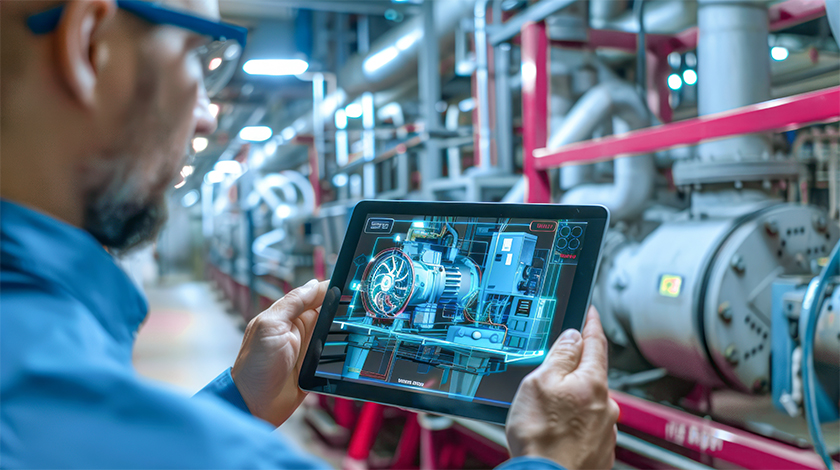Research in the field of Artificial Intelligence (AI) is challenging but full of potential – especially for a new team. When CONTACT Research was formed in 2022, AI was designated as one of four central research areas right from the start. Initially, we concentrated on smaller projects, including traditional data analysis. However, with the growing popularity of ChatGPT, we shifted our attention to Large Language Models (LLMs) and took the opportunity to work with cutting-edge tools and technologies in this promising field. But as a research team, one critical question emerged: Where do we get started?
Here, we share some of our experiences which can serve as guidance to others embarking on their AI journey.
The beginning: Why similarity search became our starting point
From the outset, our goal was clear: we wanted more than just a research project, we aimed for a real use case that could ideally be integrated directly into our software. To get started quickly, we opted for small experiments and looked for a specific problem that we could solve step by step.
Our software stores vast amounts of data, from product information to project details. Powerful search capabilities make a decisive difference here. Our existing search function did not recognize synonyms or natural language, sometimes missing what users were really looking for. Together with valuable feedback, this quickly led to the conclusion that similarity search is an ideal starting point and should therefore be our first research topic. An LLM has the power to elevate our search functionality to a new level.
The right data makes the difference
Our vision was to make knowledge from various sources such as manuals, tutorials, and specifications easily accessible by asking a simple question. The first and most crucial step was to identify an appropriate data source: one large enough to provide meaningful results but not so extensive that resource constraints would impede progress. In addition, the dataset needed to be of high quality and easily available.
For the experiment, we chose the web-based documentation of our software. It contains no confidential information and is accessible to customers and partners. Initial experiments with this dataset quickly delivered promising results, so we intensified the development of a semantic search application.
What is semantic search?
In short, unlike the classic keyword search, semantic search also recognizes related terms and expands queries to include contextually-related results – even if these are phrased differently. How does this work? In our first step with semantic indexing, the LLM converts the content of source texts into vectors and saves them in a database. Search queries are similarly transformed into vectors, which are then compared to stored vectors using a “nearest neighbor” search. The LLM returns the results as a sorted list with links to the documentation.
Plan your infrastructure carefully!
Implementing our project required numerous technical and strategic decisions. For the pipeline that processes the data, LangChain best met our requirements. The hardware also poses challenges: for text volumes of this scale, laptops are insufficient, so servers or cloud infrastructure are required. A well-structured database is another critical factor for successful implementation.
Success through teamwork: Focusing on data, scope, and vision
Success in AI projects depends on more than just technology, it is also about the team. Essential roles include Data Engineers who bridge technical expertise and strategic goals, Data Scientists who analyze large amounts of data, and AI Architects who define the vision for AI usage and coordinate the team. While AI tools supported us with “simple” routine tasks and creative impulses, they could not replace the constructive exchange and close collaboration within the team.
Gather feedback and improve
At the end of this first phase, we shared an internal beta version of the Semantic Search with our colleagues. This allowed us to gather valuable feedback in order to plan our next steps. The enthusiasm for further development is high, fueling our motivation to continue.
What’s next?
Our journey in AI research has only just begun, but we have already identified important milestones. Many exciting questions lie ahead: Which model will best suit our long-term needs? How do we make the results accessible to users?
Our team continues to grow – in expertise, members, and visions. Each milestone brings us closer to our goal: integrating the full potential of AI into our work.
For detailed insights into the founding of our AI team and on the Semantic Search, visit the CONTACT Research Blog.




